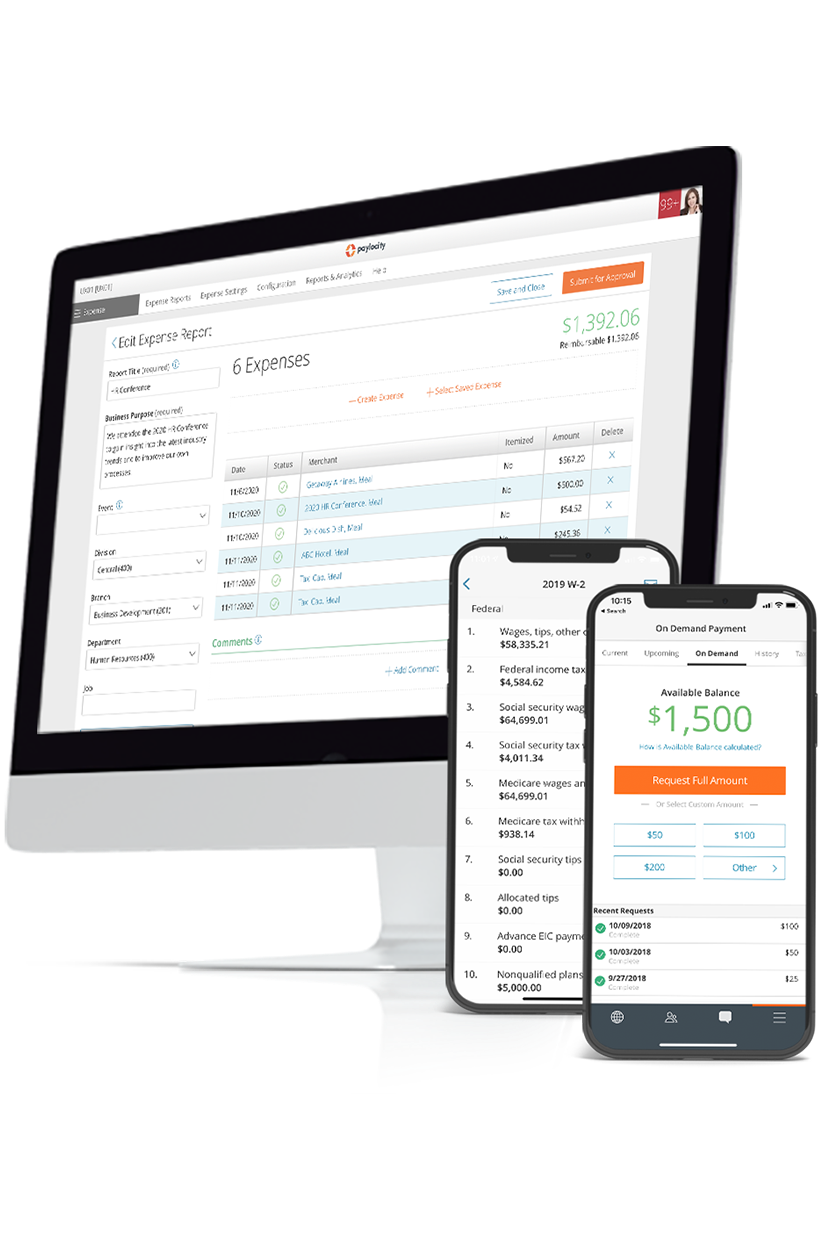resources
Internal Recruitment: Using Your Team’s Inner Power
July 18, 2023
Internal hiring is a great talent management tool and should be part of any HR pro's toolkit. Let's take a look at how sometimes the answer to your recruitment needs is right in front of you.

Your people are the lifeblood of your business, so don't just go searching outside for new hires — look within, too!
Cue internal recruitment. Internal recruitment strategies show employees how much you value them while saving time.
Let’s explore the advantages and disadvantages of internal recruitment. We'll also give tips on how to implement it successfully.
What is Internal Recruitment?
Internal recruitment is "the process of hiring people from within your organization to fill vacancies." It involves recruiting talent from other teams, departments, and locations within your company.
Internal hiring is one of several employee recruitment strategies that helps you keep your top talent. Below are some types of internal recruitment, and the pros and cons of each:
|
|
Description |
Pros |
Cons |
|
Promotion |
One of the most common 一 and coveted 一 internal hiring types. |
Promotions are a great way to engage and motivate your employees. |
Promotions can cause jealousy, and the employee may need extra training. |
|
Temporary to full-time |
Moving a temporary or part-time employee to a permanent role. |
You already know the employee's skills, strengths, and weaknesses. |
If you use a temp agency, you may have to pay a conversion fee. |
|
Transfer |
Moving an employee to the same (or similar) role in a different location or department. |
You can move employees to where they’re most needed. Plus, you can keep employees who must relocate. |
Transfers can leave gaps in your team that you'll need to fill from elsewhere. |
|
Employee referral |
Asking employees to refer qualified people and offering an incentive for doing so. |
You don't have to spend time and money searching for qualified candidates. |
Some employees may refer family or friends even if they're not suitable. |
|
Re-enlisting retired or previous employees |
Inviting back a retired or previous employee to do part-time work or consulting. |
The employee is already familiar with your organization and how it works. |
Re-enlisting can cause your company culture to stagnate 一 people may be "stuck in their ways". |
What Is the Internal Hiring Process?
The internal hiring process is similar to the process for external candidates, only faster:
- Defining the job requirements, responsibilities, and salary
- Advertising the position (internally rather than externally)
- Screening and interviewing candidates
- Choosing a candidate and making a job offer
- Asking the employee to sign a new contract
- Updating unsuccessful candidates
- Informing the internal revenue service (IRS) to update the tax information
The Advantages of Internal Recruitment
You might wonder why you’d want to hire internally when there are plenty of qualified candidates searching for new opportunities.
Internal recruitment has many advantages:
- Reduces risk. You’ve seen internal candidates in action, so you’ll have a good idea of whether they’ll be a good fit for the new role. An external candidate could have glowing references and a killer resume, but you won’t know how they’ll perform until you hire them.
- Saves time. Sourcing, screening, onboarding — it all takes time. Internal recruitment can cut this time down significantly. Instead of sifting through hundreds of applications, you can choose from a pool of proven candidates. Sure, you’ll have to do some screening, but not nearly as much. There’ll also be a much shorter onboarding process, which is good for you and them.
- Lowers costs. By hiring internally, you won’t have to shell out for a recruitment agency or advertising. Instead, you can advertise the role on your internal job board or intranet. You’ll also have lower training costs. Candidates will already know your company and how you do things. You’ll only need to train them in their new role.
- Improves morale. Internal hiring is a fantastic way to improve employee morale. Your employees will feel valued, and they’ll be more engaged and motivated. It’s also an opportunity to encourage peer recognition, for instance, when a colleague lands their dream role.
- Reduces turnover. Employee turnover is a big problem for companies, especially in such a tight job market. But, by turning inward, you can reduce turnover by giving employees the chance to grow and learn new skills instead of leaving the company.
Learn More: Onward and Upward! How Internal Mobility Benefits a Company
The Disadvantages of Internal Recruitment
As you’ve seen, hiring internally has a lot of pluses. But, before you incorporate it into your recruiting strategy, you need to consider the downsides and adjust accordingly:
- Fewer qualified candidates. Your candidate pool might end up being too small, especially if you’re a small company. You may find yourself “making do” instead of finding the most qualified candidate. If you only have a small number of internal candidates who are less qualified, consider casting your net a little wider.
- Lack of new ideas and perspectives. If you only hire internally, you miss out on the fresh ideas and perspectives of someone new. You may then get left behind by more diverse, innovative companies. It’s always worth bringing in people with different backgrounds and experiences.
- Causes vacancies in other areas. With internal hiring, when you fill one vacancy, you leave behind another. Unless you fill it with a referral or re-enlistment, you may end up hiring externally anyway.
- Can cause jealousy. If you have several employees competing for the same role, there can be jealousy when you choose one over the other(s). No one wants to feel they’ve been passed over for a promotion. External recruitment helps you avoid this kind of jealousy and keep everyone working as a team.
How to Recruit Internal Candidates
To realize the benefits of internal recruitment, you must create a strategy based on tried-and-tested methods:
1. Create a clear internal recruitment process
It’s important to create clear policies for internal recruitment so your hiring manager and employees are on the same page. Make sure to include:
- How you’ll advertise positions internally.
- Who will make internal hiring decisions.
- What interviews are required.
- How candidates should apply for promotions, transfers, etc.
- Your ideal ratio of internal vs. external recruitment.
2. Use recruitment software
Recruitment software, like an applicant tracking system (ATS) or employee onboarding software, can streamline both internal and external hiring.
For example, onboarding software automates many time-consuming processes, including training and documentation. Getting employees up to speed quickly saves money and increases their engagement.
3. Communicate vacancies to employees
Internal recruitment only works if your employees know about open positions. So, tell them! Post on internal job boards, send out emails, and feature openings in your social collaboration hub.
Also, ask managers to encourage promising candidates to apply. Make sure everyone in the company knows their career path.
4. Screen internal candidates
Just because you’re hiring internally doesn’t mean you shouldn’t screen. Ensure your internal candidates are suitable for the role by reviewing their job performance and skills. You can do this with interviews and screening tests.
If none of your internal candidates are quite right, don’t be afraid to advertise the position externally as well.
5. Ensure fairness and transparency
Like your external hiring process, internal hiring must be fair and transparent. Include several stakeholders in your screening process, and update candidates on their progress.
6. Give feedback and advice
Give candidates feedback on why they didn’t get the role. Don’t just send a boilerplate rejection letter.
You should also advise people on the path forward and give them opportunities to improve:
- Give them interview pointers.
- Suggest a role for which they’re more suited.
- Provide learning and development opportunities, like training courses or job shadowing.
Also, when appropriate, make sure people know why the successful candidate was selected. This can help reduce jealousy and avoid accusations of favoritism.
7. Complement internal recruitment with external hiring
Finally, it’s always advisable to use a combination of internal and external hiring. That way, you can reap the benefits of internal recruitment and maintain a healthy mix of new and existing faces.
Internal Recruitment Vs. External Recruitment: Harnessing the Strength of Your Team
Internal recruitment is a great way to fill vacancies quickly and economically. But it’s not always the right approach for every role. Remember to weigh the pros and cons of internal recruitment for your business.
Software streamlines both internal and external recruitment and improves the candidate experience. For instance, with Paylocity’s recruiting software, you can:
- Post automatically to online job portals.
- Access candidate information in real-time.
- Track all communications within the platform.
- Share your culture with customized videos.
- Conduct federal, state, and local background checks.
- Store all your data for future reference.
Request a demo and see how Paylocity could work for you.

Save Time with Stress-Free Payroll Solutions
Payroll doesn’t have to be complicated, but it does have to be right. Stay compliant, collect employee data, and streamline tax filing – all while putting time back in your day with our automated payroll software. With the assurance of an error-free workflow, you can get back to what matters most – your people. Learn how our modern solutions get you out of the tactical and back to focusing on the bigger picture.


